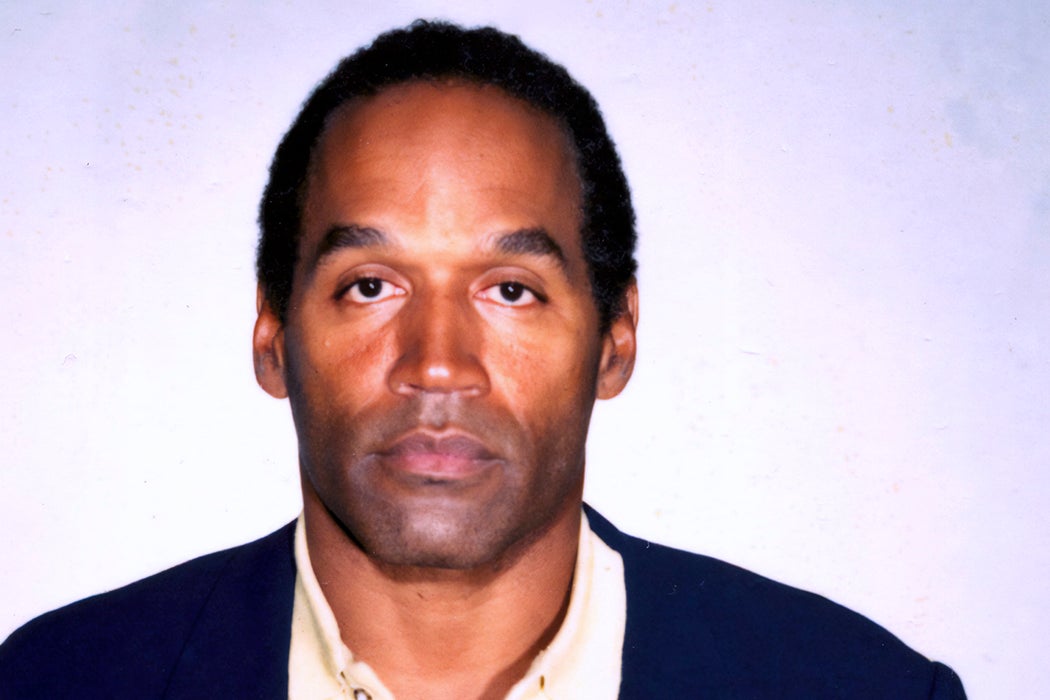With the recent popularity and success of FX’s miniseries The People v. O.J. Simpson: American Crime Story, many viewers have become (re)interested in the “trial of the century” that transfixed a nation between 1994-1995. In addition to the FX series, ESPN will introduce a five-part documentary O.J.: Made in America in June, and Martin Sheen is producing and narrating Hard Evidence: O.J. is Innocent, set to air next year and introduce “critical new evidence” to prove Simpson’s innocence. More than 20 years after the murders of Nicole Brown Simpson and Ronald Goldman and the subsequent trial, the celebrated show has sparked interest in younger viewers who did not live through the original media frenzy.
The Simpson case changed journalism in ways this generation might not even realize. In an article for Geografiska Annaler, Derek H. Alderman points out that the hyper-coverage of the Simpson case had huge effects on contemporaneous news coverage, and what he calls the “Simpsonization” of domestic news. Alderman notes that the “Guinness Book of World Records lists the Simpson case as the ‘most viewed trial’ with a daily average of 5.5 million Americans watching live coverage.” He also points out the case’s impact on other news, writing, “the Simpson case became so central to American cultural life that people were less likely to watch or read news that did not deal directly with O.J.”
This “Simpsonization” of the media began early, starting with the white Bronco chase, which NBC deemed important enough to interrupt the 1994 NBA Finals. CNN and Court TV covered each and every aspect of the court case for the full 134 days of trial. The reading of the final verdict was considered so momentous that students in local Los Angeles schools watched it live on television from their classrooms.
As the American public was bombarded with images of the case, an important subtext of the story soon arose. In their 1994 commentary on the then-current Simpson case, Ellie Bulkin and Becky Thompson called viewers to reflect upon the intersection of race and gender as it pertains to the media spectacle. Bulkin and Thompson discuss the ways in which Nicole and O.J.’s interracial relationship was central to the case, though it was not often verbally discussed. Instead, they argue, it was visually emphasized, as the American public was bombarded with dark, “sinister” images of Simpson. They write:
…we’ve heard almost nothing about the obvious fact that a Black man has been accused of killing a thin blonde woman who represents the ideal type of white womanhood. The silence about the racial dynamics speaks volumes about the insidious nature of racism: what white people have been taught is impolite to say in words is instead communicated through pictures.
Bulkin and Thompson continue, “[w]hite women have historically been used—sometimes willingly, sometimes not—in the racist portrayals of Black men.” Though the authors do not argue explicitly for Simpson’s innocence or guilt, they do highlight the ways in which existing racist referents were adopted by the media. Symbolically, white women have been used as both an innocent foil and victim against which a black men can be made guilty. (This has been seen and studied in the history of lynchings and more recently in the terror at Charleston’s Emanuel AME church.)
So what was (and is) the effect of the media frenzy? Bulkin and Thompson consider the effect largely in terms of anti-racist and pro-feminist rhetoric as they argue for new ways of watching and speaking about the case. Since the media ignored underlying complexities in its exploration of the intersectionality of race, gender, and class, they urge viewers to interrogate these distorted media patterns. Alderman also considers the fallout of the hyper-coverage, arguing to investigate absences in media patterns. In the years between the car chase and the verdict, other more important and relevant news stories—about Bosnia, the Oklahoma City bombing, welfare reform, or the Middle East peace accord—were eclipsed by the hyper-coverage of the case.
In both analyses, the journalistic media frenzy and “Simpsonization” of the case shaped and potentially distorted the world of the reader and viewer. The media’s implicit racism and the birth of the 24-hour-news-coverage brought us into the world we know today, where TV lineups are abound with “reality” shows, hyper-news coverage, and true-life crime stories. On the one hand, with the gift of hindsight, we are in a better position to see the way race was used to manipulate the story—particularly with help from the FX series and others forthcoming, but on the other hand, we are so inundated and “Simpsonized” that “reality” has become a distorted norm.







